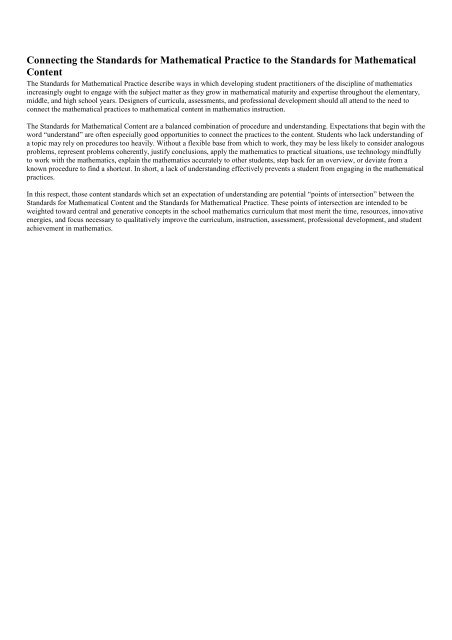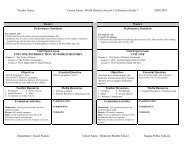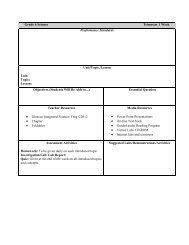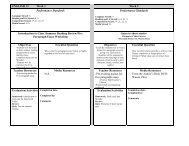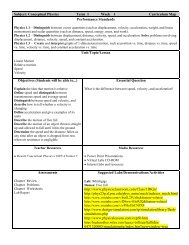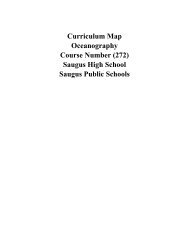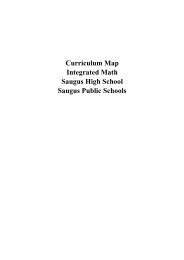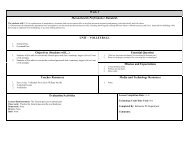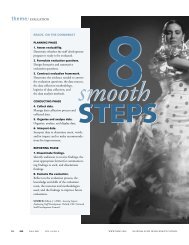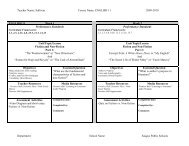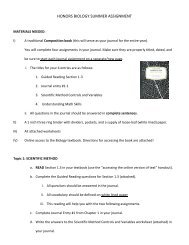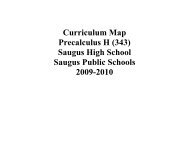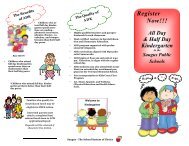Intro to Calculus Curriculum Map CCSS - Saugus Public Schools
Intro to Calculus Curriculum Map CCSS - Saugus Public Schools
Intro to Calculus Curriculum Map CCSS - Saugus Public Schools
You also want an ePaper? Increase the reach of your titles
YUMPU automatically turns print PDFs into web optimized ePapers that Google loves.
Connecting the Standards for Mathematical Practice <strong>to</strong> the Standards for Mathematical<br />
Content<br />
The Standards for Mathematical Practice describe ways in which developing student practitioners of the discipline of mathematics<br />
increasingly ought <strong>to</strong> engage with the subject matter as they grow in mathematical maturity and expertise throughout the elementary,<br />
middle, and high school years. Designers of curricula, assessments, and professional development should all attend <strong>to</strong> the need <strong>to</strong><br />
connect the mathematical practices <strong>to</strong> mathematical content in mathematics instruction.<br />
The Standards for Mathematical Content are a balanced combination of procedure and understanding. Expectations that begin with the<br />
word “understand” are often especially good opportunities <strong>to</strong> connect the practices <strong>to</strong> the content. Students who lack understanding of<br />
a <strong>to</strong>pic may rely on procedures <strong>to</strong>o heavily. Without a flexible base from which <strong>to</strong> work, they may be less likely <strong>to</strong> consider analogous<br />
problems, represent problems coherently, justify conclusions, apply the mathematics <strong>to</strong> practical situations, use technology mindfully<br />
<strong>to</strong> work with the mathematics, explain the mathematics accurately <strong>to</strong> other students, step back for an overview, or deviate from a<br />
known procedure <strong>to</strong> find a shortcut. In short, a lack of understanding effectively prevents a student from engaging in the mathematical<br />
practices.<br />
In this respect, those content standards which set an expectation of understanding are potential “points of intersection” between the<br />
Standards for Mathematical Content and the Standards for Mathematical Practice. These points of intersection are intended <strong>to</strong> be<br />
weighted <strong>to</strong>ward central and generative concepts in the school mathematics curriculum that most merit the time, resources, innovative<br />
energies, and focus necessary <strong>to</strong> qualitatively improve the curriculum, instruction, assessment, professional development, and student<br />
achievement in mathematics.


